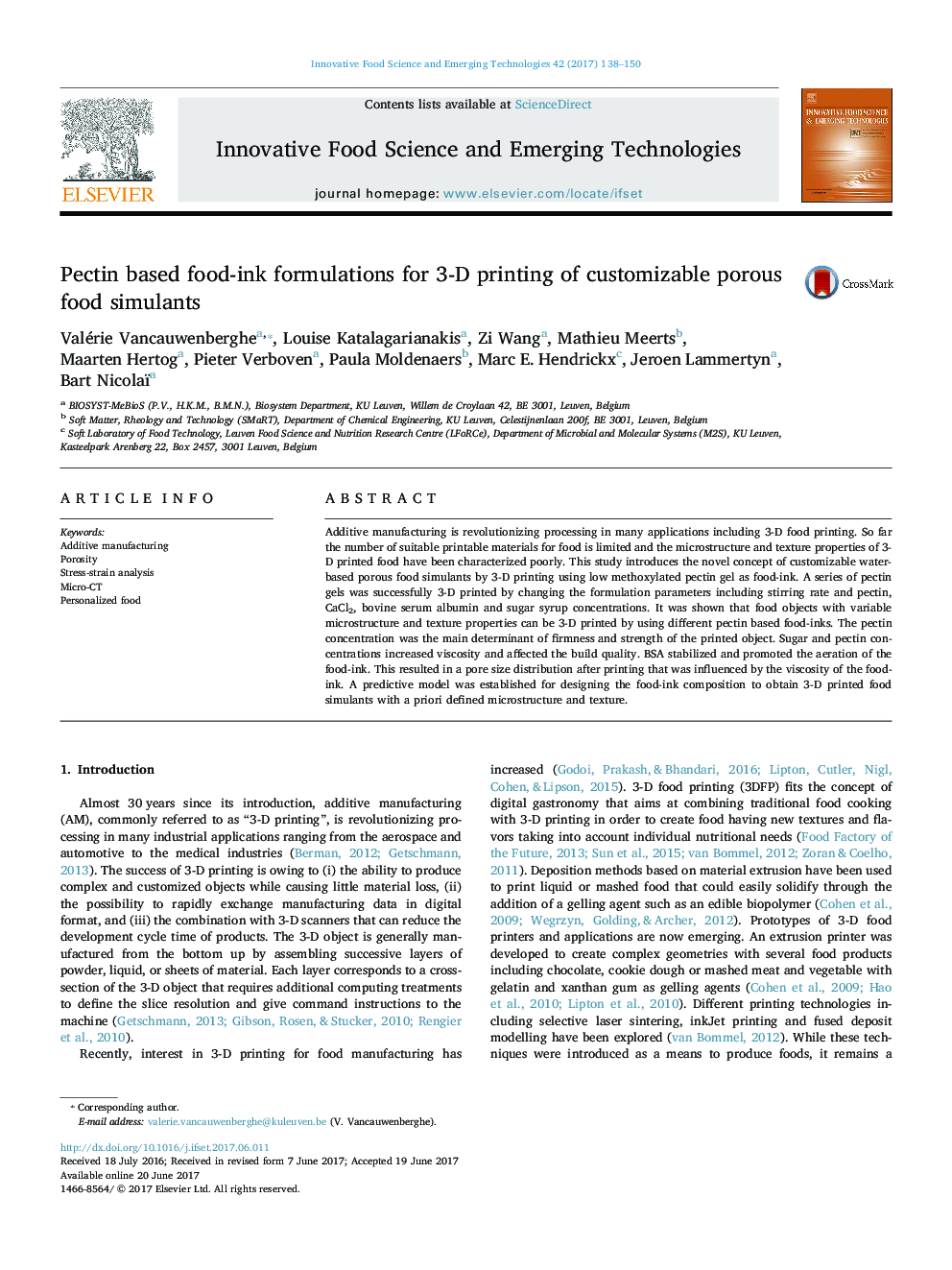| Article ID | Journal | Published Year | Pages | File Type |
|---|---|---|---|---|
| 5521727 | Innovative Food Science & Emerging Technologies | 2017 | 13 Pages |
â¢Edible objects were successfully 3-D printed using low methoxylated pectin gels.â¢Objects with variable properties were printed by changing the food-ink composition.â¢Bovine serum albumin stabilized the air bubbles in the food-ink.â¢Sugar syrup increased the viscosity of the food-ink and may result in better build qualityâ¢The CaCl2 concentration had to be adjusted with respect to the pectin concentration.â¢The models may be used as a tool to formulate customized pectin-based food.
Additive manufacturing is revolutionizing processing in many applications including 3-D food printing. So far the number of suitable printable materials for food is limited and the microstructure and texture properties of 3-D printed food have been characterized poorly. This study introduces the novel concept of customizable water-based porous food simulants by 3-D printing using low methoxylated pectin gel as food-ink. A series of pectin gels was successfully 3-D printed by changing the formulation parameters including stirring rate and pectin, CaCl2, bovine serum albumin and sugar syrup concentrations. It was shown that food objects with variable microstructure and texture properties can be 3-D printed by using different pectin based food-inks. The pectin concentration was the main determinant of firmness and strength of the printed object. Sugar and pectin concentrations increased viscosity and affected the build quality. BSA stabilized and promoted the aeration of the food-ink. This resulted in a pore size distribution after printing that was influenced by the viscosity of the food-ink. A predictive model was established for designing the food-ink composition to obtain 3-D printed food simulants with a priori defined microstructure and texture.
